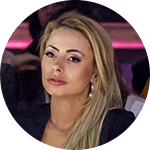- Modern Egyptian Art Paintings
- Egyptian cat art - the fusion of transcendental and secular aspects of existence

- 5 July '18


by Alexandra Osadkova
5 July '18Modern Egyptian Art Paintings
Ancient Egyptian artwork has to be considered from the perspective of the early Egyptians to know it. The somewhat inactive, usually formal, curiously subjective, and frequently blocky character of much Egyptian vision has, on occasion, led to unfavorable comparisons with later, and much more'pragmatic,' Greek or Renaissance art. However, the art of the Egyptians served a vastly different function than that of these subsequent cultures. Egyptian Art was not intended to be seen. While now we marvel at the tomb of Tutankhamun, it's important to bear in mind that most these works were never designed to be seen--which was not their objective.
Egyptian Abstract Art
In the dawn of the twentieth century, Egyptians, burdened with centuries of foreign occupation, were united in their aspiration for a modern country. Thus modern art was an essential visual expression of Egyptian identity and freedom from foreign oppression. It was a manifestation of this contemporaneous intellectual discourse led by secular liberals, among them authors, poets, and artists, male and female. The approval of figuration and the debut of art education in schools were sanctioned by religious scholars. This tolerant attitude toward figurative artwork was also the consequence of new developments in photography and publishing, in addition to the revolutionary establishment of the regional film industry. Egypt led the Arab world in these fields, though it took a full century before photography has been formally acknowledged as an art form.
In the other extreme stood the Art and Life Group, whose followers strived for the preservation of arts and crafts traditions and encouraged artists to research and advance the crafts in fresh and innovative ways (Hassan Fathi, New Gourna Project in Upper Egypt - Egyptian Art Paintings). After the 1952 revolution, artists lost considerable government stipends, in addition to elite patronage; artists' groups were disbanded together with all political parties. In the second half of this century, there was a marked lack of places for the open public discussion that had characterized the pre-revolutionary period. In the aftermath of the Arabs' crushing defeat in the 1967 Six-Day War, artists searched for a decorative language drawn from Islamic customs. They used calligraphy and geometric style to communicate political and spiritual messages in abstract or decorative styles, a trend that's known in Arab and some Islamic nations as the Calligraphic School of Art.
Egyptian Cat Art
Due to these associations with gods and their usefulness to Egyptians, domestic cats were treated well. In fact, since predynastic times, Egyptian cats were mummified. Extensive cat burials have been found at a few sites, including the site of the goddess Bastet. Last summer I remember seeing the small, rectangular sarcophagus of the cat of Prince Thutmose (see above) at a King Tut exhibition. The British Museum also has an interesting anthropomorphic coffin of a cat. Although some domestic cats may not have had been revered themselves as sacred deities, these pets certainly held a high place of regard within their Egyptian families.
The featured oil painting seems to be slightly off the general line of his oeuvre, which is focused mainly on the deeply problematic social, political or ethical issues. In contrast with them, the image of a cat might look a little bit pop, considering the extreme trendiness of that subject in the social networks. However, not to get carried with this impression and understand the painting better, it is important to answer the question: why cats rule the Internet? There are many version explaining this, and one of them is suggested by ethologists, who claim the beauty of cats is the beauty of death. Big cats used to hunt our ancestors, so people were forced to explore their habits. Predators brought death, and everything connected to death hypnotizes people: we are afraid of cheetahs or tigers but admire them at the same time. And when humans domesticated small cats, it felt like death itself had been tamed. That can clarify the awe of the ancient Egyptians before these creatures.
Egyptian Cat a Sacred symbol by Gheorghe Virtosu

Illusion of the flat
Unlike in many of his other pieces, here Virtosu doesn’t attempt to ruin the illusion of the flat painting surface with the active vibrating background. On contrary, he highlights its two-dimensionality, making the canvas looks like a fragment of the wall: the stressed horizontal line under what we perceive as a cat, wide brushstrokes, blend of beige and gray (the colors of the limestone), evoke in our mental images of the walls of the Egyptian tombs and temples.
Egyptian art
Egyptian art followed the principle of the engineering design: to show an object not from one point of view, but from the combination of different perspectives that makes it the most recognizable. The same way, Virtosu chooses the curled up pose - the essence of the cat’s character that represents causality, relaxedness, and grandiosity.
Bernard Shaw believed the level of a person’s culture is demonstrated by his ability to comprehend a usual cat. But, probably, this is true for any animal since we need to learn to appreciate the soul of every living creature.

